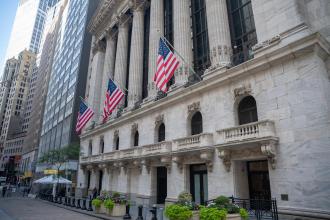The recent developments in the financial markets, particularly with the Nasdaq, Dow, and S&P 500, have garnered significant attention following the Federal Reserve’s decision to cut interest rates. As investors process these changes, clarity around economic indicators, especially inflation, becomes paramount. In this report, we will unravel the recent movements of the stock indices, Federal Reserve policy implications, and the ongoing inflation narrative shaped by Fed Chair Jerome Powell.
### Current Market Landscape
The Nasdaq Index has reached record highs, demonstrating resilience amid varying economic signals. Investors have flocked to technology stocks, buoyed by their continued growth trajectories and robust earnings reports. The index’s performance underscores the market’s appetite for growth-oriented sectors despite broader economic concerns.
Conversely, the Dow Jones Industrial Average and the S&P 500 have shown softer performance in response to the Fed’s rate cuts. These declines can be attributed to investor nervousness over future economic conditions and potential implications for corporate earnings. Market volatility remains high, highlighting the intricate balances at play within the financial ecosystem.
### The Federal Reserve’s Role
The recent decision from the Federal Reserve to implement interest rate cuts comes as part of a broader strategy to stimulate economic growth in the face of persistent inflationary pressures. At his post-decision press conference, Jerome Powell offered insights into the nuances of inflation and its relation to Fed policy.
Powell noted that while inflation remains stubbornly close to 3%, a deeper analysis reveals a more complex landscape. He emphasized that the inflationary uptick is largely attributed to tariffs, particularly affecting goods prices. “The September CPI report … was a little softer than expected,” he remarked, pointing out that goods prices are rising mainly due to external factors rather than broad-based price increases across the economy.
### Insights from the CPI Report
The Consumer Price Index (CPI) report for September illustrates some key dynamics at play in the economy. Powell highlighted that despite certain areas experiencing price hikes, the overall trend albeit influenced by tariffs reflects a transitional period. Historically, prices for goods have shown much milder inflation or even deflation, and current changes are a deviation from that longer-term trend.
Additionally, Powell indicated positive movements in housing inflation, traditionally a significant concern for the Fed. “Housing services inflation has been coming down and is expected to continue to come down,” he stated. This suggests that the housing market, a significant driver of inflation, is beginning to stabilize.
The ongoing category of concern lies within service sectors outside of housing, which has maintained a sideways movement over recent months. Powell’s analysis underscores that once tariffs are stripped out, underlying inflation figures are more aligned with the Fed’s goal of 2%, being closer to 2.3% to 2.4%. This revelation is critical for stakeholders who need to factor in both short-term inflation indicators and long-term economic projections.
### Federal Commitment to Target Inflation
In his remarks, Powell reiterated the Federal Reserve’s unwavering commitment to the target inflation rate of 2%. “We’re absolutely committed to returning inflation to 2%,” he asserted. Such a commitment establishes credibility with markets and reinforces that the Fed is willing to adopt measures necessary for economic stability.
Powell’s framing of inflation expectations, based on longer-term surveys and market pricing, serves to reassure investors that the Fed is proactively managing its inflation target. The challenge remains in navigating how these monetary policy adjustments interact with various sectors of the economy, including potential impacts on consumer spending and corporate investments.
### Market Repercussions and Forward Outlook
The interaction between Fed policy and stock market performance paints a complex picture. Following the rate cuts, investor sentiment has displayed polarization, causing fluctuations in stock indices. Growth stocks, particularly within the technology space, continue to rally, driving the Nasdaq upward. Conversely, the Dow and S&P’s more mixed performances could signify that sectors reliant on traditional economic indicators are bracing for potential shifts.
As we look ahead, economic data will be pivotal in informing both investor strategies and Fed policy decisions. Potential employment reports, consumer confidence readings, and housing market disruptions will collectively shape the trajectory of inflation and subsequent Fed responses.
### Conclusion
In summary, the interplay between the Nasdaq’s record highs, the dips in the Dow and S&P 500, and recent Fed rate cuts encapsulates the ongoing complexities of the economic landscape. Jerome Powell’s analysis presents a nuanced view of inflation, indicating underlying pressures may not be as severe as they seem when accounting for external factors.
As the Federal Reserve remains committed to its target inflation rate and navigates the delicate balance of economic stimulation, investors must remain vigilant. Understanding the fundamental undercurrents of inflation—as emphasized by Powell—will prove essential in making informed decisions in this dynamic market environment. The conversations surrounding monetary policy and economic projections will undoubtedly continue to shape market movements in the months ahead.
Source link









